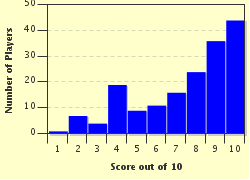Quiz Answer Key and Fun Facts
1. Who is generally given credit for the development of the Religious Society of Friends (Quakers)?
2. Richard Nixon was the second United States president to align himself with his Quaker background. Who was the first?
3. What prominent Quaker is given credit for the establishment of one of the original thirteen colonies?
4. On August 15, 2015 the civil rights movement lost one of its most known and respected advocates who founded, in the 1960s, the Student Nonviolent Coordinating Committee, and was Chairman of NAACP from 1998 to 2010. Who was this charismatic leader?
5. Walt Whitman was born into an economically disadvantaged Quaker family. From his many writings, this influence is evident. Which of these works did NOT come from the pen of Walt Whitman?
6. Each age must have its spokesman. Thomas Paine, a protégé of Ben Franklin, came to America and articulated the goals of freedom; he inspires even today with his rhetoric. In what other revolution other than the American was he actively involved?
7. Squire Boone (name not title) and Sarah Jarman Morgan were among the contingent of Quakers who followed William Penn to America. Their son, Daniel, became an American folk hero. What state is Daniel given credit for exploring and establishing?
8. George Cadbury, along with his brother Richard, were leading Quakers in their time. The firm that they established provided a model business structure that was far advanced for the era. What was the main product of their business?
9. Who was the broadcast journalist who helped bring down the political career of Senator Joseph McCarthy in the 1950s?
10. Perhaps no one more typifies the social and political activist than Susan B. Anthony. Born in 1820 to a Quaker family with a long activist tradition, she at 17 became the New York agent for the American Anti-Slavery Society. She was to lead many crusades during her life. In 1979 the federal government issued a coin in her honor. What was its denomination?
Source: Author
Rehaberpro
This quiz was reviewed by FunTrivia editor
agony before going online.
Any errors found in FunTrivia content are routinely corrected through our feedback system.

